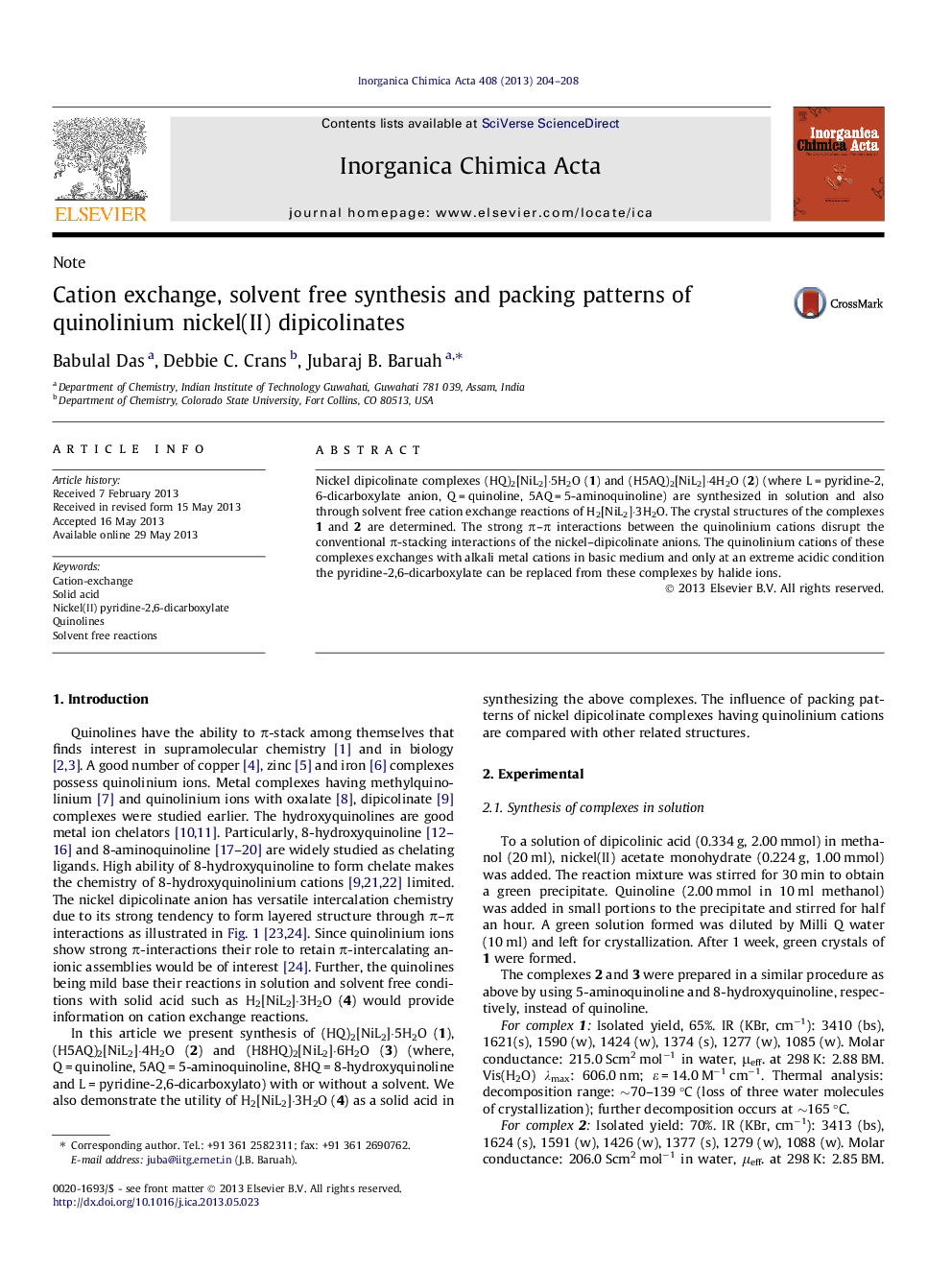| کد مقاله | کد نشریه | سال انتشار | مقاله انگلیسی | نسخه تمام متن |
|---|---|---|---|---|
| 1310233 | 1499179 | 2013 | 5 صفحه PDF | دانلود رایگان |

• Quinolinium salts of nickel–dipicolinate are synthesized in solution as well as under solvent free conditions.
• The dihydro-bis(pyridine-2,6-dicarboxylato)nickelate(II) is a solid acid for cation exchange under solvent free condition.
• The strong π-interactions among quinolines disrupt conventional layered structures found in nickel dipicolinate complexes.
Nickel dipicolinate complexes (HQ)2[NiL2]·5H2O (1) and (H5AQ)2[NiL2]·4H2O (2) (where L = pyridine-2,6-dicarboxylate anion, Q = quinoline, 5AQ = 5-aminoquinoline) are synthesized in solution and also through solvent free cation exchange reactions of H2[NiL2]·3H2O. The crystal structures of the complexes 1 and 2 are determined. The strong π–π interactions between the quinolinium cations disrupt the conventional π-stacking interactions of the nickel–dipicolinate anions. The quinolinium cations of these complexes exchanges with alkali metal cations in basic medium and only at an extreme acidic condition the pyridine-2,6-dicarboxylate can be replaced from these complexes by halide ions.
The solvent free reactions of quinoline derivatives with dihydro-bis(pyridine-2,6-dicarboxylato)nickelate(II) lead to protonation of the respective quinoline to form their corresponding salt. Due to existence of strong π-interactions between the quinolinium cations the regular stacking patterns of the metal–dipicolinate anions is not observed.Figure optionsDownload as PowerPoint slide
Journal: Inorganica Chimica Acta - Volume 408, 1 November 2013, Pages 204–208